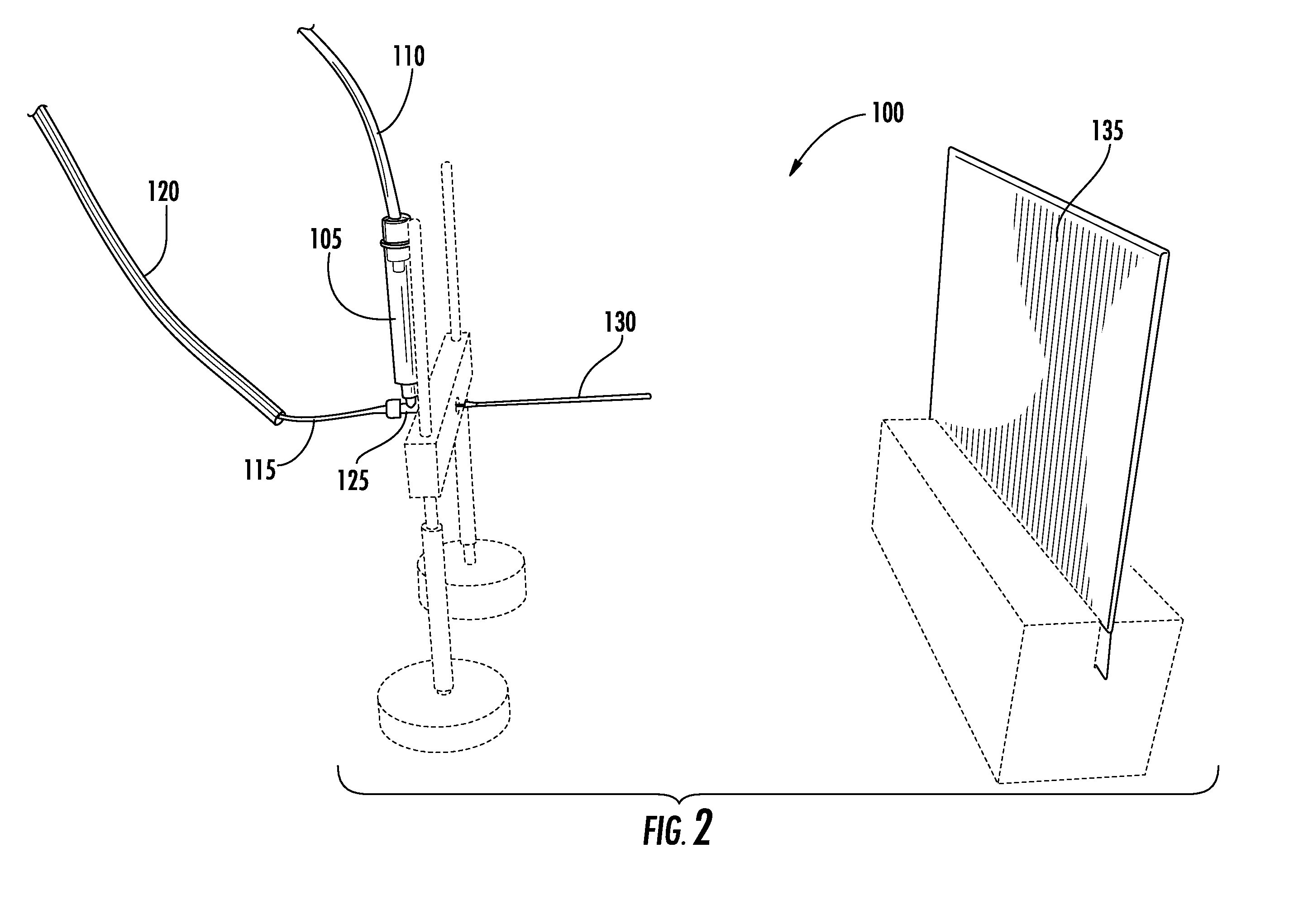Methods of Applying Skin Wellness Agents to a Nonwoven Web Through Electrospinning Nanofibers
a technology of electrospinning nanofibers and skin wellness agents, which is applied in the field of methods of applying skin wellness agents, can solve the problems of limiting the type of additives that can be included within the resulting nanofiber, and many biologically active substances cannot withstand the temperature and other conditions of the melt fibrillation process
- Summary
- Abstract
- Description
- Claims
- Application Information
AI Technical Summary
Problems solved by technology
Method used
Image
Examples
example 1
[0073]1.5 g of polyethylene oxide (PEO, Aldrich, Mv=300,000) was dissolved in an aqueous solution of acetyl tetrapeptide (0.1% by weight). The aqueous solution of acetyl tetrapeptide is commercially available under the name Eyeseryl® from Lipotec, Inc. (distributed by Centerchem Inc., Norwalk, Conn.). The solution was shaken on an Eberbach shaker until the solution was homogeneous and the PEO was dissolved. The solution was placed in a single-jet electrospinning unit and electrospun onto a 0.4 osy polypropylene spunbond fabric at 30 kV and a tip-to-target distance of 24 cm. The configuration of the electrospinning unit is shown in FIG. 2. Mass throughput was calculated by spinning onto a foil target and found to 1.495 mg / min. The spunbond facings were placed in front of the target plate for 30, 60, 90 and 120 seconds. Based on the area of deposition (113.1 cm2) basis weights of addition of nanofibers to the substrates was calculated as 0.066, 0.132, 0.198, 0.264 grams per square met...
example 2
[0074]1.92 g of polyethylene oxide (PEO, Aldrich, Mv=300,000 g / mol) and 1.92 g of glycerin (Sigma G2289) were dissolved in 15.36 g of deionized water. The solution was shaken on an Eberbach shaker until the solution was homogeneous and the PEO was dissolved. The solution was placed in a single-jet electrospinning unit and electrospun onto a 0.4 osy polypropylene spunbond fabric at 30 kV (positive polarity solution with a grounded target plate) and a tip-to-target distance of 24 cm. The configuration of the electrospinning unit is shown in FIG. 2. Mass throughput was calculated by spinning onto a foil target and found to be 2.4 mg / min. SB facings were placed in front of the target plate for 30, 60, 90 and 120 seconds. Based on the area of deposition basis weights of addition of nanofibers to the substrates were calculated as 0.9, 1.6, 1.6, 2.0 grams per square meter (gsm), respectively. The nanofibers for each sample were characterized by field emission SEM. A bimodal distribution of...
example 3
[0075]1.92 g of polyethylene oxide (PEO, Aldrich, Mv=300,000 g / mol) and 0.28 g of AH-Care L-65 (Cognis) were dissolved in 17.00 g of deionized water. The solution was shaken on an Eberbach shaker until the solution was homogeneous and the PEO was dissolved. The solution was placed in a single-jet electrospinning unit and electrospun onto a 0.4 osy polypropylene spunbond fabric at 30 kV (positive polarity solution with a grounded target plate) and a tip-to-target distance of 24 cm. The configuration of the electrospinning unit is shown in FIG. 2. Mass throughput was calculated by spinning onto a foil target and found to be 2.8 mg / min. Spunbond facings were placed in front of the target plate for 30, 60, 90 and 120 seconds. Based on the area of deposition basis weights of addition of nanofibers to the substrates were calculated as 0.8, 0.4, 2.1, 1.1 grams per square meter (gsm), respectively. The nanofibers for each sample were characterized by field emission SEM. An average diameter ...
PUM
| Property | Measurement | Unit |
|---|---|---|
| Temperature | aaaaa | aaaaa |
| Temperature | aaaaa | aaaaa |
| Diameter | aaaaa | aaaaa |
Abstract
Description
Claims
Application Information
 Login to View More
Login to View More - R&D
- Intellectual Property
- Life Sciences
- Materials
- Tech Scout
- Unparalleled Data Quality
- Higher Quality Content
- 60% Fewer Hallucinations
Browse by: Latest US Patents, China's latest patents, Technical Efficacy Thesaurus, Application Domain, Technology Topic, Popular Technical Reports.
© 2025 PatSnap. All rights reserved.Legal|Privacy policy|Modern Slavery Act Transparency Statement|Sitemap|About US| Contact US: help@patsnap.com



